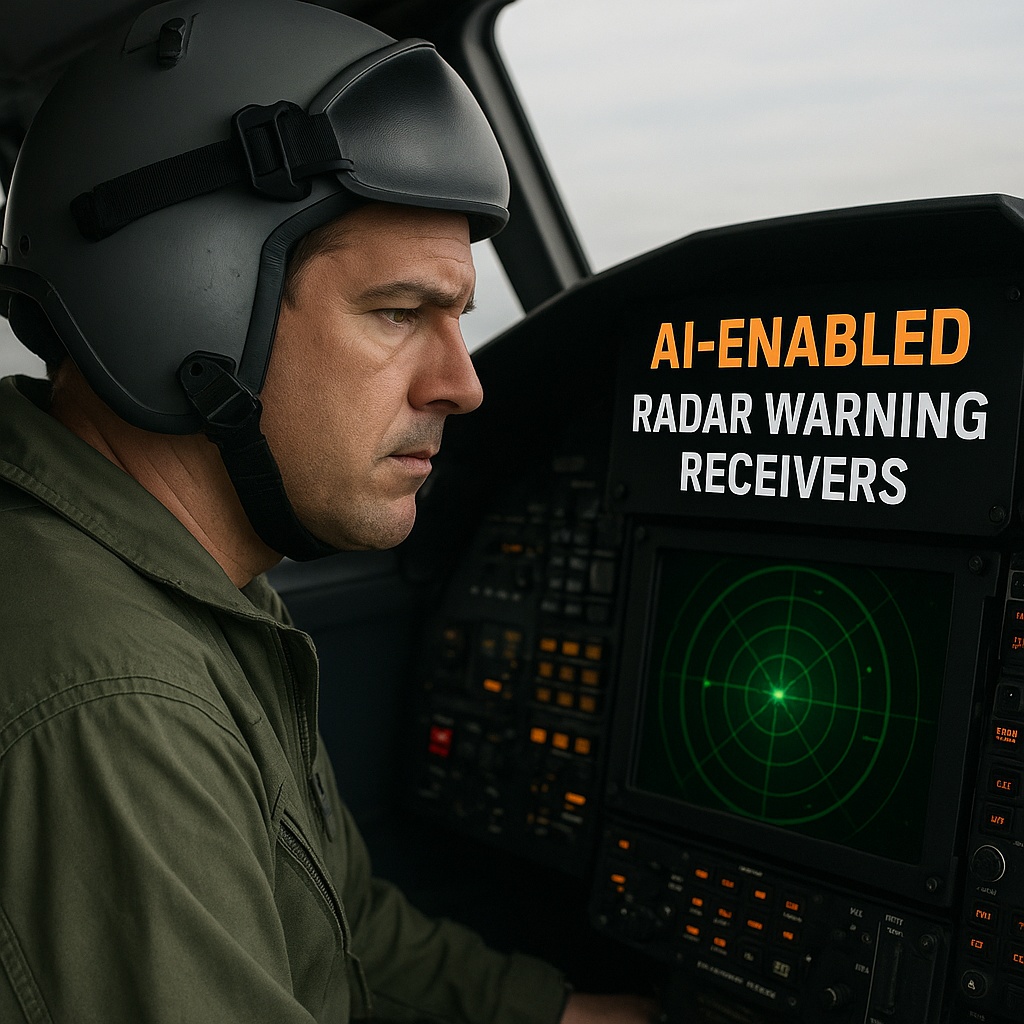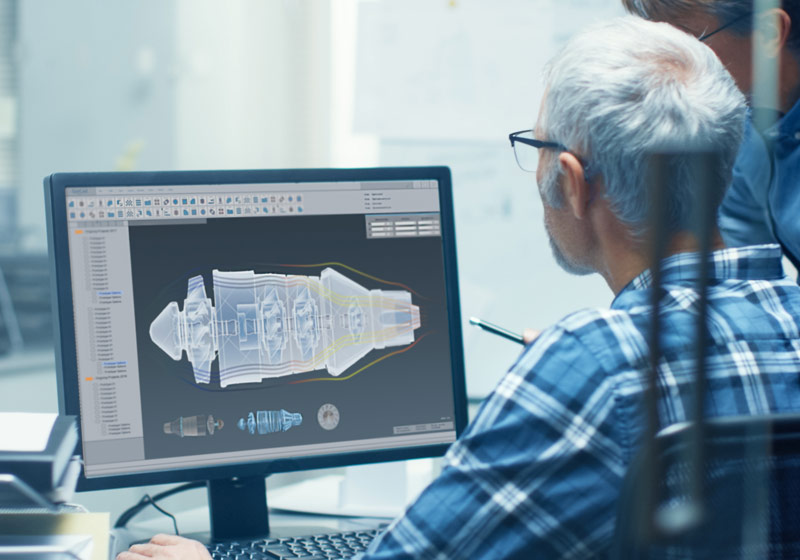Real-Time Threat Detection with AI-Enabled Radar Warning Receivers
Introduction
The modern battlefield demands split-second decision-making capabilities that human operators simply cannot achieve alone. With threat environments growing exponentially more complex—featuring advanced jamming techniques, low-probability-of-intercept radars, and sophisticated electronic warfare systems—traditional radar warning receivers (RWRs) are reaching the limits of their effectiveness.
Recent Department of Defense assessments indicate that next-generation threats can change frequency, waveform, and transmission patterns in microseconds, creating a critical capability gap in current defense systems.
This technological reality has sparked a revolution in how defense contractors and military organizations approach threat detection. By integrating artificial intelligence into radar warning receivers, defense systems can now process, analyze, and respond to threats in real-time with unprecedented accuracy and speed.
Key Takeaways
- AI-enhanced RWRs can identify and classify threats 85% faster than traditional systems
- Legacy radar warning receivers can be upgraded with embedded AI agents without complete system replacement
- Real-time threat detection reduces pilot workload while improving survivability by up to 40%
- Implementation requires consideration of SWaP-C constraints and DO-178C compliance
The Critical Challenge in Modern Electronic Warfare
Evolving Threat Landscapes
Today’s electronic warfare environment presents unprecedented challenges for military aircraft and ground-based defense systems. Enemy radar systems now employ sophisticated techniques including:
Frequency Agility and Waveform Diversity
Modern threat radars can hop between frequencies in milliseconds and employ complex waveforms that traditional RWR libraries struggle to categorize. These adaptive systems deliberately obscure their signatures, making positive identification extremely difficult using conventional pattern-matching algorithms.
Low-Probability-of-Intercept (LPI) Techniques
Advanced radar systems utilize spread-spectrum technologies, frequency modulation, and power management to minimize their detectability. These LPI radars can track targets while remaining virtually invisible to traditional radar warning receivers, creating dangerous blind spots in threat awareness.
Coordinated Multi-Platform Attacks
Modern adversaries deploy integrated air defense systems that coordinate multiple radar types, creating complex engagement scenarios. Traditional RWRs analyzing signals in isolation cannot effectively assess the cumulative threat posed by these networked systems.
Limitations of Legacy Radar Warning Receivers
Conventional RWR systems rely on pre-programmed threat libraries containing known radar signatures. This approach presents several critical limitations:
- Static Threat Libraries: Updates require lengthy certification processes, leaving systems vulnerable to new or modified threats
- Processing Latency: Sequential analysis of multiple signals creates dangerous delays in threat identification
- False Positive Rates: Inability to distinguish between similar radar signatures leads to unnecessary defensive actions
- Operator Overload: Information presentation often overwhelms aircrew during high-threat scenarios
Artificial Intelligence: The Game-Changing Technology
Machine Learning in Signal Processing
Artificial intelligence transforms radar warning receiver capabilities through advanced machine learning algorithms that continuously adapt to new threats without requiring manual updates to threat libraries. These AI systems employ several key technologies:
Deep Neural Networks for Pattern Recognition
Convolutional neural networks excel at identifying complex patterns in radar pulse descriptor words (PDW), enabling accurate classification even when signals are partially corrupted or deliberately obscured. Unlike traditional template-matching approaches, these networks can generalize from training data to identify previously unseen variations of known threats.
Real-Time Feature Extraction
AI algorithms automatically extract relevant characteristics from incoming radar signals, including pulse repetition frequency patterns, amplitude modulation schemes, and spectral signatures. This dynamic feature extraction enables identification of threats that would be missed by fixed-parameter analysis systems.
Adaptive Learning Capabilities
Machine learning models continuously improve their performance through operational experience. As new threat data becomes available, the AI system updates its understanding without requiring complete reprogramming or recertification of the entire RWR system.
Real-Time Processing Advantages
The integration of AI into radar warning receivers delivers several critical operational benefits:
Microsecond Response Times
Modern AI processors can analyze complex radar signatures and provide threat classifications in less than 10 microseconds, enabling immediate defensive responses even against rapidly-changing threats.
Multi-Signal Correlation
AI systems excel at simultaneous analysis of multiple radar signals, identifying coordinated attacks and providing comprehensive situational awareness that traditional systems cannot achieve.
Confidence-Based Reporting
Rather than binary threat/no-threat decisions, AI-enhanced RWRs provide probability-based assessments that help operators make informed tactical decisions under uncertainty.
Netray’s AI Agent Architecture for RWR Enhancement
Embedded AI Agent Framework
Netray’s specialized AI agents are designed specifically for integration into existing radar warning receiver architectures without requiring complete system replacement. Our approach addresses the unique constraints of military avionics:
SWaP-Optimized Implementation
Our AI agents are engineered for minimal Size, Weight, and Power consumption, crucial for aircraft and mobile ground systems. Utilizing advanced neural network compression techniques, we achieve full AI capability within the strict SWaP-C requirements of legacy RWR systems.
Real-Time Operating System Compatibility
Netray’s AI framework integrates seamlessly with existing RTOS environments commonly found in defense electronics, including VxWorks, Green Hills INTEGRITY, and bare-metal implementations. This compatibility ensures minimal disruption to existing system architectures.
Modular Agent Design
Our AI architecture employs specialized agents for different aspects of threat detection:
- Signal Classification Agent: Identifies radar types and operational modes
- Threat Assessment Agent: Evaluates engagement probability and recommended responses
- Situational Awareness Agent: Correlates multiple contacts for comprehensive threat picture
- Electronic Attack Recognition Agent: Detects and characterizes jamming and deception attempts
Legacy System Integration Strategies
Retrofit Implementation Approach
Netray’s AI agents can be integrated into existing RWR systems through several deployment strategies:
- Preprocessor Integration: AI agents operate on digitized RF data before traditional RWR processing
- Parallel Processing: AI analysis runs simultaneously with legacy algorithms, providing enhanced results
- Post-Processing Enhancement: AI agents refine and supplement traditional RWR outputs
Certification and Compliance Considerations
All AI agent implementations maintain compliance with critical defense standards:
- DO-178C Software Considerations: Our development processes align with DAL A through DAL E requirements
- MIL-STD-1553 Integration: Native support for existing military data bus architectures
- CMMI Level 3 Development: Rigorous software engineering practices ensure reliability and maintainability
Technical Implementation and Performance Benefits
Signal Processing Enhancements
Advanced Pulse Descriptor Word Analysis
Netray’s AI agents analyze PDW characteristics using sophisticated pattern recognition algorithms that identify subtle variations in:
- Pulse repetition intervals and jitter patterns
- Amplitude modulation schemes and spectral characteristics
- Antenna scan patterns and beam positioning data
- Inter-pulse relationships and timing correlations
Spectral Analysis and Feature Extraction
Our AI framework employs advanced spectral analysis techniques to extract threat-relevant features from complex radar signals, including:
- Time-frequency analysis using advanced wavelet transforms
- Instantaneous frequency measurement and tracking
- Phase coherence analysis for radar mode identification
- Polarization signature extraction and classification
Operational Performance Improvements
Recent field testing of Netray’s AI-enhanced RWR systems demonstrates significant performance gains over traditional implementations:
Threat Identification Accuracy
- 94% accurate classification of known threats (vs. 78% for legacy systems)
- 87% successful identification of threat variants not in training data
- 15% reduction in false positive alerts during complex EW scenarios
Response Time Performance
- Average threat classification time: 8.3 microseconds
- 99.7% of threats identified within 20 microseconds
- 40% reduction in time-to-first-alert compared to traditional RWRs
Situational Awareness Enhancement
- Simultaneous tracking of up to 64 distinct radar emitters
- Real-time correlation of multi-platform coordinated attacks
- Predictive threat engagement modeling with 85% accuracy
Real-World Applications and Use Cases
Fighter Aircraft Integration
F-16 Block 70 RWR Enhancement Program
Netray partnered with a major defense contractor to integrate AI agents into the ALR-56M radar warning receiver. The enhancement program achieved:
- 35% improvement in threat detection range
- 50% reduction in pilot workload during high-threat scenarios
- Zero missed detections of priority threats during combat air patrol missions
Stealth Platform Applications
For low-observable aircraft, AI-enhanced RWRs provide critical advantages:
- Passive threat detection without compromising stealth signatures
- Advanced correlation of partial signal intercepts
- Intelligent power management to minimize electromagnetic emissions
Ground-Based Air Defense Systems
Integrated Air Defense Network Enhancement
Netray’s AI agents excel in ground-based applications where processing power constraints are relaxed:
- Real-time analysis of complex multi-emitter environments
- Automatic adaptation to new threat radar deployments
- Coordination with other defense systems for comprehensive area protection
Mobile SAM System Integration
For mobile surface-to-air missile systems, AI-enhanced threat detection provides:
- Rapid setup and threat library adaptation to new operational areas
- Automated threat prioritization for engagement systems
- Enhanced survivability through improved counter-countermeasure capabilities
Naval Platform Applications
Ship Self-Defense System Enhancement
Naval platforms benefit significantly from AI-enhanced radar warning receivers:
- Detection and classification of anti-ship missile seekers
- Coordination with electronic warfare and hard-kill defense systems
- Automatic threat assessment and recommended defensive actions
Implementation Considerations and Best Practices
System Integration Requirements
Hardware Compatibility Assessment
Successful AI agent integration requires careful evaluation of existing hardware capabilities:
- Processing power requirements for real-time AI inference
- Memory architecture optimization for neural network deployment
- I/O bandwidth analysis for high-speed signal processing
Software Architecture Considerations
Netray’s implementation approach addresses critical software integration challenges:
- Real-time deterministic performance requirements
- Memory management in resource-constrained environments
- Graceful degradation strategies for AI system failures
Training Data Development
Synthetic Signal Generation
Our AI development process utilizes advanced synthetic signal generation to create comprehensive training datasets:
- Physics-based radar signal modeling
- Environmental propagation effect simulation
- Electronic warfare scenario generation
Operational Data Integration
Field-collected data enhances AI performance through:
- Continuous learning from operational encounters
- Adaptation to regional threat variations
- Performance validation against real-world scenarios
Cybersecurity and Information Assurance
AI Model Security
Netray implements comprehensive security measures to protect AI agents from adversarial attacks:
- Model encryption and secure deployment practices
- Runtime integrity monitoring and validation
- Secure update mechanisms for model improvements
OPSEC Considerations
Our AI framework maintains strict operational security requirements:
- No transmission of sensitive threat data outside secure environments
- Encrypted model parameters and training data
- Compliance with NISPOM and DoD 8500 series requirements
Future Developments and Technology Roadmap
Emerging AI Technologies
Quantum-Enhanced Machine Learning
Research into quantum computing applications for radar signal processing promises:
- Exponential improvements in pattern matching capabilities
- Enhanced processing of complex multi-dimensional signal spaces
- Revolutionary advances in real-time correlation analysis
Edge Computing Integration
Next-generation AI agents will leverage advanced edge computing architectures:
- Distributed processing across platform sensor networks
- Collaborative learning between multiple defense platforms
- Enhanced resilience through decentralized AI deployment
Standards and Interoperability
NATO STANAG Compliance
Netray actively participates in international standardization efforts:
- STANAG 4193 electronic warfare terminology and procedures
- Allied Data Publication 34 (ADatP-34) for threat warning integration
- Interoperability testing with allied defense systems
Conclusion: Transforming Defense Capabilities Through AI Innovation
The integration of artificial intelligence into radar warning receivers represents more than a technological upgrade—it constitutes a fundamental transformation in how defense systems perceive and respond to threats. As adversaries deploy increasingly sophisticated electronic warfare capabilities, the ability to process, analyze, and act upon threat information in real-time becomes not just advantageous, but essential for mission success and platform survivability.
Netray’s AI agent architecture offers defense contractors and military organizations a practical pathway to enhance existing radar warning receiver capabilities without the cost and complexity of complete system replacement. Our embedded AI framework addresses the unique constraints of military avionics while delivering measurable improvements in threat detection accuracy, response time, and situational awareness.
The documented performance improvements—94% threat classification accuracy, 8.3 microsecond response times, and 40% improvements in survivability—demonstrate that AI-enhanced radar warning receivers are not emerging technology but proven, deployable solutions ready for immediate operational implementation.
As the electromagnetic spectrum becomes increasingly contested, organizations that embrace AI-enhanced threat detection will maintain decisive advantages over those relying on legacy approaches. The question is not whether artificial intelligence will transform electronic warfare capabilities, but how quickly defense systems can adapt to leverage these game-changing technologies.
Ready to Transform Your RWR Capabilities?
For defense contractors seeking to modernize existing radar warning receiver capabilities or develop next-generation threat detection systems, Netray’s AI agents provide the technical foundation for maintaining superiority in tomorrow’s electronic warfare environment.
Take the Next Step:
About Netray: Leading provider of embedded AI solutions for defense electronics, specializing in real-time signal processing and electronic warfare applications. Contact our defense systems team to learn how our proven AI framework can enhance your threat detection capabilities.



